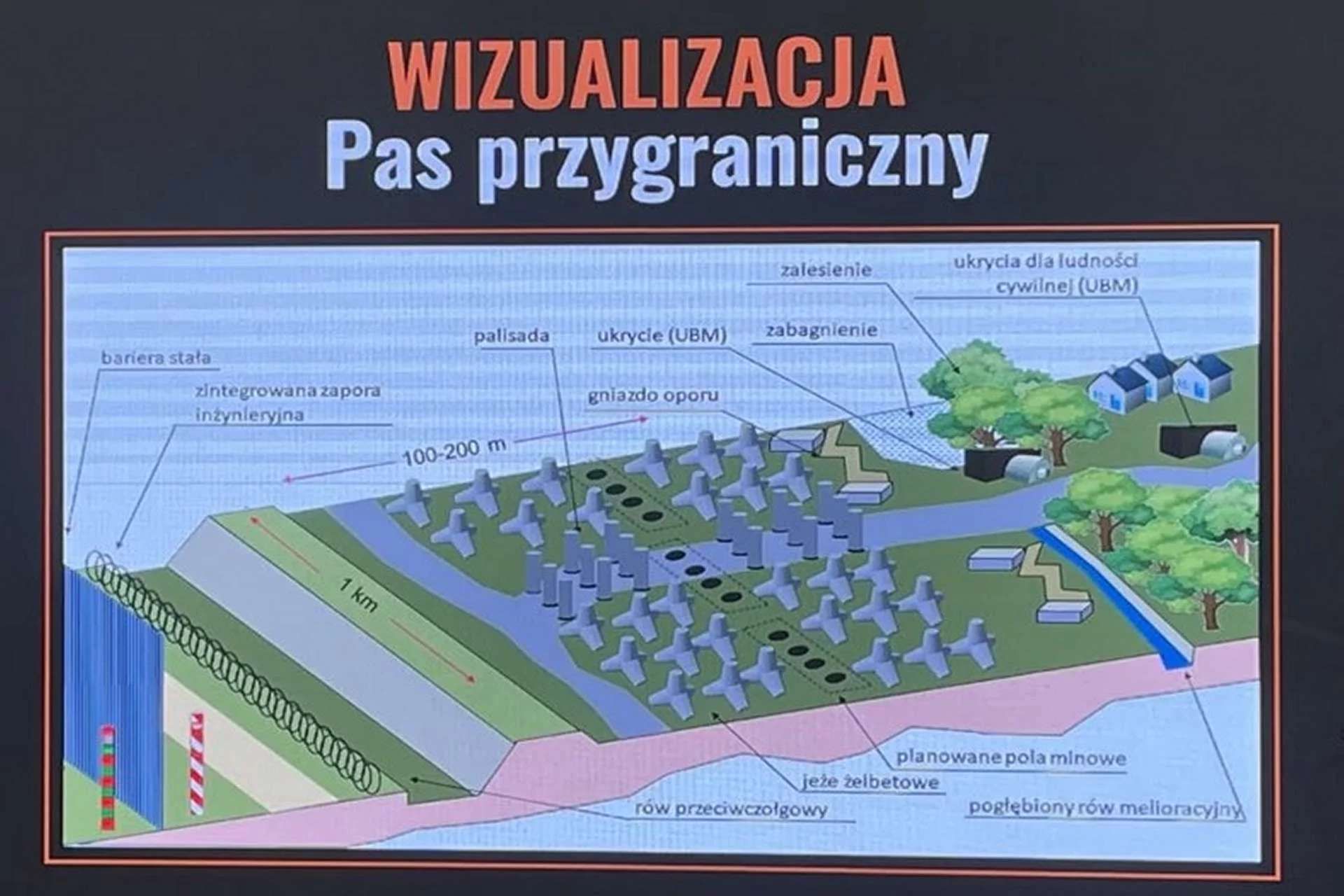Breaking News
Analysis : Lithuania Mines Neman River Bridges to Protect NATO Eastern Border Against Russia.
On October 9, 2024, the Lithuanian Ministry of Defense announced on Twitter the completion of new fortifications on a strategic bridge over the Neman River, near the border with Russia's Kaliningrad region. Several bridges have already been reinforced with anti-tank obstacles, such as "dragon's teeth" and "anti-tank hedgehogs." If necessary, some structures may also be destroyed to block enemy access.
Follow Army Recognition on Google News at this link

Lithuania reinforces bridges with anti-tank obstacles near Russian border. (Picture source: Lithuanian MoD)
Lithuanian Defense Minister Laurynas Kasčiūnas specified that mines would be placed on certain bridges to enhance their resilience to incursions. These measures aim to protect Lithuanian territory from potential invasions, relying on defensive structures and military equipment to repel attacks. In August, Lithuania had already begun installing these obstacles along its borders with Russia and Belarus, signaling a proactive strategy to anticipate any threats.
This Lithuanian initiative is part of a regional collaboration with Latvia and Estonia. According to Estonian Defense Minister Hanno Pevkur, the construction of these defenses is motivated by the war in Ukraine, which has demonstrated the importance of physical barriers in addition to military forces. These installations, designed as anti-mobility elements, aim to slow and deter hostile movements from the first meters of the territory.
Latvian Defense Minister Andris Spruds also highlighted the importance of this "Baltic defense line," aimed at strengthening NATO's eastern flank. In a social media statement, he emphasized that these installations are designed to restrict enemy movement and enhance the responsiveness of defense forces. This collective initiative is based on NATO resolutions adopted at the Madrid Summit in 2022, which provided concrete defense measures for the alliance's eastern borders.
These fortifications are part of a larger framework to coordinate the security of the Baltic states in case of conflict. The Estonian Ministry of Defense recalled that these defensive elements would be deployed based on strategic analyses of the environment and defense plans, ensuring adaptation to enemy intentions. As a result, the infrastructures will be reinforced with regional coordination and mutual assistance among the Baltic countries.
At the 2022 NATO Summit in Madrid, leaders endorsed an expansion of the Baltic defense line to include substantial fortifications along NATO's eastern borders, especially for the Baltic states. This "concrete line of defense" includes pre-positioned fortifications, anti-tank barriers, and enhanced defensive structures along key points, aimed at deterring any rapid incursions. This line integrates brigade-sized battlegroups, quick-response reinforcements, and multi-layered defense measures across land, air, and cyber domains. The strategy is designed to obstruct any potential aggression, ensuring NATO can rapidly respond to threats on its eastern flank.
By reinforcing its bridges and establishing physical defense structures, Lithuania illustrates a shift in the region's security policies. Amid persistent tensions with Russia, this approach aims to provide immediate protection while aligning with NATO priorities. The Baltic states, now at the forefront of European security, demonstrate their determination to safeguard against instability in this strategic area.
The Baltic states are not alone in building defensive lines. In May 2024, Poland launched a large-scale defense program called "Eastern Shield" to enhance the security of its eastern borders with Russia and Belarus. This project involves constructing a network of fortifications and barriers covering approximately 700 kilometers, with total expenditures estimated at several billion dollars, including around $2.5 billion for materials alone. This initiative includes surveillance towers, anti-drone defenses, anti-tank obstacles, and shelters and is part of a broader strategy to counter cyberattacks, security incidents, and orchestrated migrations. Funded by the Polish government, which dedicates over 4% of its GDP to defense, and supported by the European Union, the "Eastern Shield" aims to secure Polish forces' mobility and protect civilians.
In recent military history, walls and defense lines have played a key role in halting enemy advances. Examples like the Siegfried Line in Germany, used to slow American troops in the fall of 1944, demonstrate the impact of these fortifications. This line of bunkers, trenches, and anti-tank obstacles was crucial for delaying the Allies, despite its vulnerability to massive bombings. Though costly and often imperfect, these defenses provided a strategic respite, allowing German troops to reposition and attempt counterattacks.
In the Russia-Ukraine conflict, fortifications have become central to defensive strategies, starting with the Russians, who strengthened their positions to contain Ukrainian advances. Utilizing trenches, barbed wire, anti-tank ditches, and obstacles like "dragon's teeth," the Russians aimed to slow enemy progress and concentrate Ukrainian attacks in controlled areas suitable for counterattacks. In response, Ukrainian forces have also established sophisticated defensive lines in preparation for renewed Russian offensives as favorable weather conditions return. These defenses are intended to slow enemy advances, inflict losses, and complicate any rapid progression.
These defensive lines consist of complementary structures organized in depth. At the forefront, barbed wire and minefields are often deployed to slow infantry and light vehicles. Next come trenches, dug in zigzag patterns to limit direct firing lines and provide protection from shell fragments. Anti-tank ditches and concrete barriers, such as "dragon's teeth," block armored vehicles, forcing the enemy to advance slowly and in a controlled manner. These elements, aligned in multiple parallel rows, form a physical and psychological barrier, creating terrain favorable for artillery fire and significantly increasing the difficulty for the enemy to break through these defense lines in force. Reserves positioned in strategically located concentration areas can intervene if necessary to repel any limited breakthrough.

Poland launched a large-scale defense program called "Eastern Shield" to enhance the security of its eastern borders with Russia and Belarus. (Picture source: Polish MoD)


























